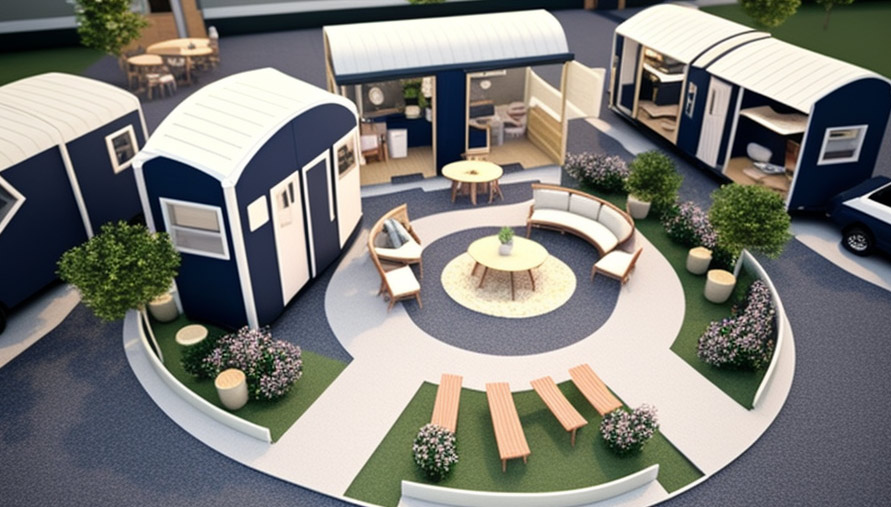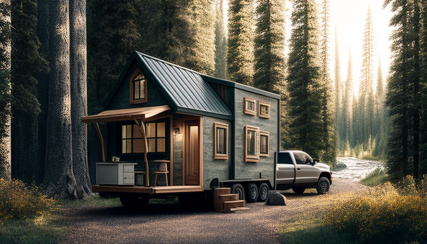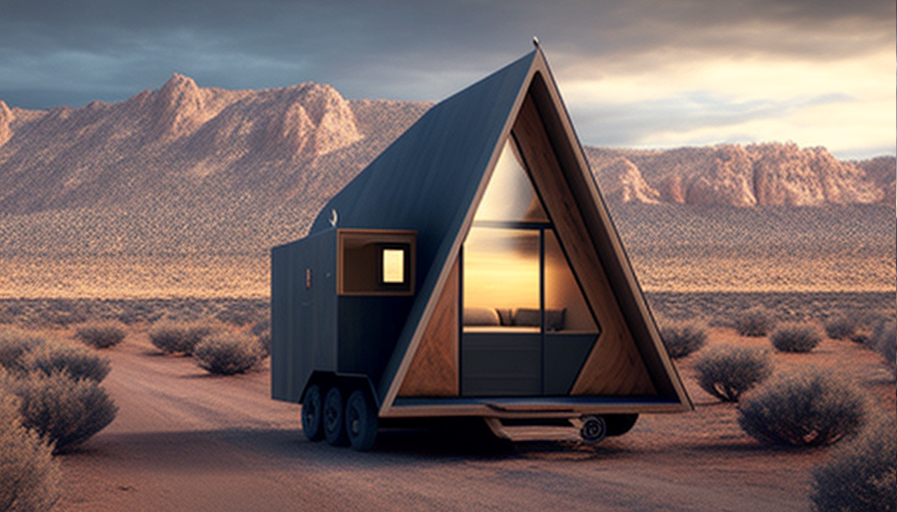Tiny house living is a lifestyle choice that emphasizes simplicity, minimalism, and sustainability. Here is a guide to help you get started:
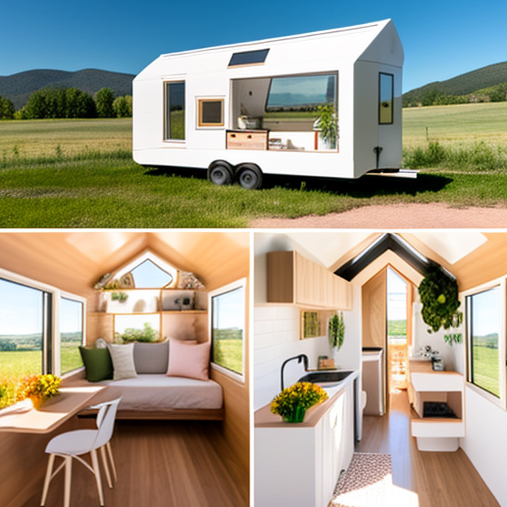
- Research the tiny house lifestyle and decide if it aligns with your values and priorities: Before diving into tiny house living, it’s important to research the lifestyle and understand what it entails. This includes learning about the benefits and challenges, as well as the values and priorities that align with the tiny house lifestyle. For example, tiny house living emphasizes simplicity, minimalism, and sustainability, so it’s important to be comfortable with these concepts before committing to the lifestyle.
- Create a list of your must-have features and amenities: Once you’ve decided that tiny house living is for you, create a list of your must-have features and amenities. This will help you determine the size and layout of your tiny house, as well as the type of amenities you’ll need to include. For example, if you love to cook, you’ll want to make sure your tiny house includes a functional kitchen. If you value privacy, you’ll want to make sure your tiny house includes separate sleeping and living areas.
- Determine your budget and financial plan: Tiny houses can be less expensive than traditional homes, but they still require a significant investment. Determine your budget and financial plan before beginning the building process. This will help you decide on the type of tiny house you can afford, as well as the materials and amenities you can include.
- Decide on the size and layout of your tiny house: The size and layout of your tiny house will depend on your budget, as well as your must-have features and amenities. Consider the space you will need for sleeping, eating, and storage, and how to make the most of the limited square footage.
- Research zoning laws and building codes in your area: Tiny houses are not recognized as a legal form of dwelling in all areas, so it’s important to research zoning laws and building codes in your area before beginning the building process. Make sure to find out if tiny houses are allowed in your area, and if there are any specific regulations you’ll need to comply with.
- Choose a design and floor plan that fits your needs and budget: Once you’ve determined the size and layout of your tiny house, choose a design and floor plan that fits your needs and budget. There are a variety of tiny house designs available, from traditional to modern, so take the time to find one that aligns with your personal style.
- Decide on the type of foundation or chassis for your tiny house: Tiny houses can be built on a variety of foundations or chassis, such as a traditional foundation, a trailer, or a skid. Decide on the type of foundation or chassis that will work best for your tiny house and your budget.
- Choose sustainable and eco-friendly building materials: Tiny houses are often built using sustainable materials, such as reclaimed wood or bamboo. This not only helps to reduce the environmental impact of the house, but it can also add character and charm. Consider using eco-friendly insulation, such as cellulose or fiberglass, to improve energy efficiency.
- Incorporate multi-functional elements to maximize space: Tiny houses often incorporate multi-functional elements, such as a pull-out bed or a fold-down table, to make the most of the limited space. Consider other space-saving solutions, such as built-in storage or a loft bed.
- Plan for efficient lighting, heating, and cooling systems: Because of the limited space in a tiny house, it’s important to plan for efficient lighting, heating, and cooling systems. Consider using LED lights, a mini-split air conditioner, and a propane or electric heater to save space and energy.
- Consider the installation of solar panels or other alternative energy sources: Tiny houses often rely on alternative energy sources, such as solar panels, to power the home. Consider installing solar panels or other alternative energy sources to reduce your dependence on the grid and improve energy efficiency.
- Decide on the type of plumbing and bathroom facilities: Tiny houses often have limited space for plumbing and bathroom facilities. Decide on the type of plumbing and bathroom facilities that will work best for your tiny house. for example, a composting toilet, a greywater system, or a shower/bathtub combo.
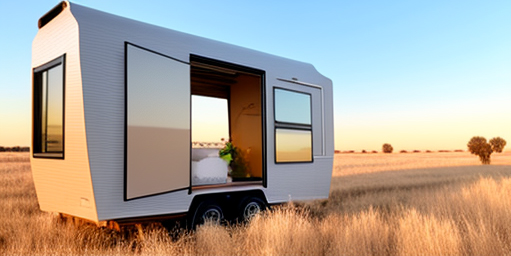
- Plan for adequate storage and organization solutions: Because of the limited space in a tiny house, it’s important to plan for adequate storage and organization solutions. Consider built-in storage, under-bed storage, or a loft bed to maximize space.
- Choose durable and low-maintenance finishes and fixtures: Tiny houses are often built to be durable and low-maintenance. Choose finishes and fixtures that are easy to clean and maintain, such as laminate flooring or a stainless-steel sink.
- Research and choose a reputable builder or DIY the project: You can either build your tiny house yourself or hire a reputable builder to do it for you. Research different builders and compare their experience, reputation, and pricing before making a decision.
- Prepare for the building process and permits: Building a tiny house requires a significant investment of time and money. Prepare for the building process by obtaining any necessary permits, as well as researching the local building codes and zoning laws.
- Be prepared to downsize and declutter your possessions: One of the key aspects of tiny house living is downsizing your possessions. This means getting rid of items that you no longer need or use, and only keeping the essentials. Be prepared to declutter your possessions and simplify your life.
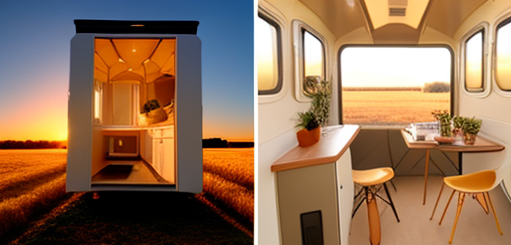
- Embrace outdoor living and make the most of your tiny house’s outdoor space: Tiny houses often have small outdoor spaces, such as a porch or deck. Embrace outdoor living by adding outdoor furniture and plants, and using the space for outdoor activities.
- Join tiny house communities and stay informed about the latest developments in the tiny house movement: Tiny house living can be a very social and community-oriented lifestyle. Get to know your neighbors and join tiny house communities online to stay informed about the latest developments in the tiny house movement.
- Enjoy the simplicity, freedom, and sustainability of tiny house living: The tiny house lifestyle is not for everyone, but it can be a very rewarding and fulfilling experience if it aligns with your values and priorities. Embrace the simplicity, freedom, and sustainability of tiny house living and enjoy the unique benefits that come with it.
